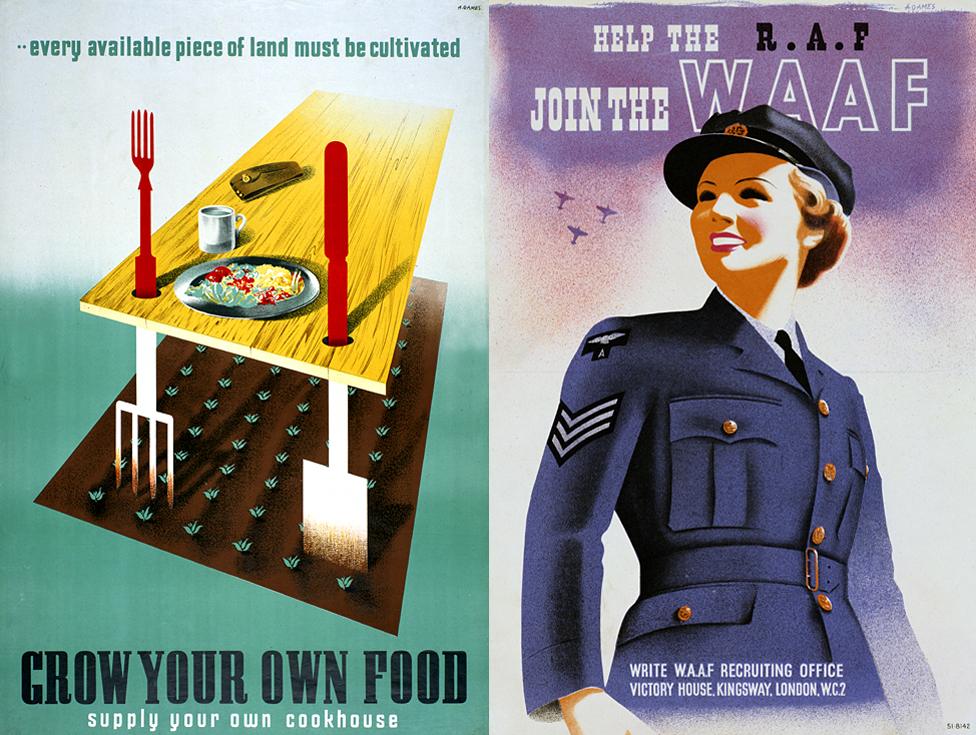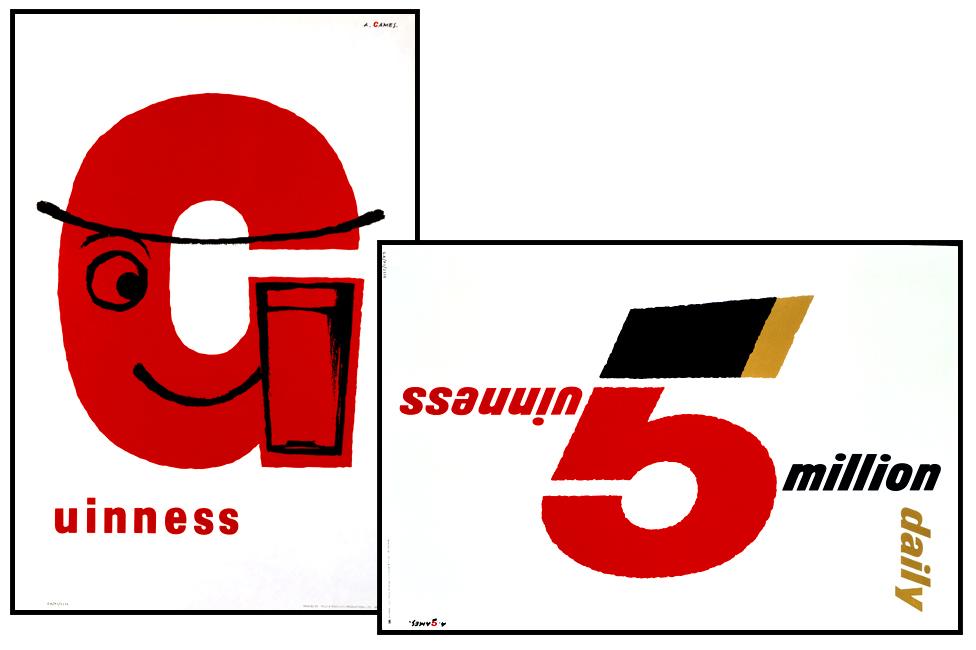Abram Games: Posters that framed the nation
- Published
You may recognise some of these colourful images - but do you know the artist behind them? Abram Games was one of the 20th Century's most influential graphic designers - it is his distinctive work that provides one of the most enduring memories of the 1951 Festival of Britain.
The Jewish Museum, external in London is marking the 100th anniversary of Games's birth with an exhibition which explores his Russian immigrant roots, and his substantial contribution to British culture.
Click here to take a look at some of his most memorable - and often controversial - artwork. And then scroll down for more:
Abram Games was born in the East End of London the day after World War One broke out.
He began his career as a freelance artist - working for clients like London Transport. During World War Two he worked for the government - designing maps, cap badges and book covers at first - but later becoming an official war poster artist.
As his daughter Naomi explained in the photofilm above, some of his work from 1939-45 had a very short life - being banned and subsequently pulped. But plenty of his art did survive. Encouraging recruitment and wartime safety, the posters often showed stark, stylised images, with clear typography:

Grow your own Food: Supply Your Own Cookhouse (1942) / Help the RAF, join the WAAF (1940) (Copyright: Estate of Abram Games)
Games studied at St Martin's School of Art in London for two terms but then left. He was often told that his early work was rubbish, or more politely, ahead of its time, says Naomi. But she explains that he stuck to his principle of keeping things simple.
His London Transport design from 1937 (on the left below) had only two colours, but his use of an air brush added texture. Nearly 40 years later, his tiger enticing visitors to London Zoo was more vibrant with bold splashes of colour.
It was recently voted the second favourite London Underground art poster of all time, external. Horace Taylor's Brightest London is best reached by Underground, from 1924, came top.

London Transport: A Train Every 90 Seconds (1937) / London Zoo (1976) (Copyright: Estate of Abram Games and Transport for London)
Like his government work, Games's advertising commissions conveyed strong messages. His daughter Naomi, who co-curated the Jewish Museum exhibition, says the art he created for Guinness was among his personal favourites.

G is for Guinness (1956) / 5 Million Guinness Daily (1958) (Copyright: Estate of Abram Games)
In 1951, he memorably featured Britannia on his Festival of Britain emblem (see photo film). That year saw him also design two distinctive images for the national railways and Jersey tourism.
The See Britain by Train posters remain true to his "maximum meaning, minimum means" motto. While his beach umbrella for Jersey Tourism went off-brief - he was originally asked to picture a young woman in a bikini - but ended up becoming award-winning.

See Britain by Train (1951) / Jersey (1951) (Copyright: Estate of Abram Games / Jersey Tourism)
Designing the 20th Century: Life and Work of Abram Games can be seen at the Jewish Museum in north London until 4 January 2015.
All images subject to copyright. Photofilm images courtesy Estate of Abram Games. Photofilm music by KPM Music. Production by Paul Kerley.
Related:
Jewish Museum London, external
Abram Games official website, external
You might also like:
Ordinary beauty - Edwin Smith's striking photographs